This past Sunday I had the pleasure of speaking with the Congregation Am Haskalah book club about all things Jewish horror, including my story “On Seas of Blood and Salt“. The video of the chat is here. I’m the one in the Hawaiian shirt with the Sasquatch pattern.
Five For Writing – Thomas R. Clark
Author, podcaster and gamer, Thomas R. Clark is a man of many talents. In addition to published works like The God Provides, he anchors the metal-and-horror podcast Necrocasticon. So let’s throw the goat and let Thomas answer in his own words
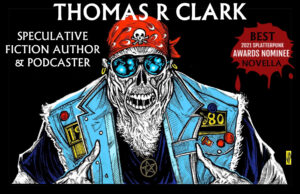 1-Heavy metal and horror. What’s the connection?
1-Heavy metal and horror. What’s the connection?
My two favorite niche genres of entertainment. And they are niche, no matter how rabid and vocal the fan bases are for both. They are linked through iconography and themes, mostly.One can’t think of Iron Maiden without also seeing their zombified mascot, Eddie. Many metal bands use imagery typically associated with horror – Type O Negative, for example, or Ghost and their Satanic pope character Papa Emeritus – hell, even Black Sabbath’s name comes from a Boris Karloff film. Not to mention one of my favorite horror novels, The Scream from Skipp & Spector, which is a perfect blend of this.
2-What was the experience of writing your first novel like?
Do you mean the one I just wrote? Or the two I wrote between 2015 and 2018 that will never see the light of day cos they are/were nothing but a collection of scenes and awful? Well, wait, that isn’t all true. I’ve cannibalized and re-written portions from both into other pieces. For example, the opening chapter to Whirlwind was slightly modified into the short story “Chirp” you can find in my debut collection, A Book of Light and Shadow. The protagonist of the same book, a private detective named Dianne Brighton, was reimagined as the protagonist of my WIP, The Witch of November. I write slowly, and writing a full length novel is an arduous task for me. My longest piece of published fiction to date is The God Provides, but that is technically a collection of four novelettes. The Death List, my longest narrative piece in print, is just under 40K. Now, the one I just completed, Summerhome, is my first full length commercial novel, no disrespect to F. Scott Fitzgerald. I found the process with this to much easier than I thought it would be, as I was taking what I’ve learned with my prior pieces and applied it to this. I’m in the midst of a rewrite before going to my editor.
3-What have you learned from the process?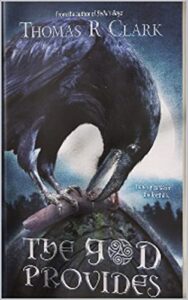
I learned your first book will be awful, and likely your second book, too.But they need to be awful. I’ve learned writing books is a lonely trade, and the legends of writers having substance abuse issues are no joke. It’s easy to tip a bottle or light up a smoke when you are alone as much as a writer is.
4-What’s the most metal thing you’ve ever written?
Thus far, it’s Bella’s Boys. The Death List is pretty metal, too, but Bella’s Boys is so much more than a cosmic horror novella. It has meta-layers, making it everything that is metal and Rock-n-roll. For example, the chapters indicating the date, time and snowfall totals – those represent the time signatures of a song on an album. The book is an album in print, with each chapter being a new track, or song in presented in narrative prose.
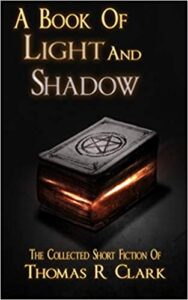 5-How does your podcasting relate to your writing?
5-How does your podcasting relate to your writing?
I went to college for broadcasting and journalism, so the podcasting is a natural extension of that. Podcasting, ironically, has led me to my writing career, though. I’m glad I’m doing this now, and not thirty years ago. I imagine the ME of that era wouldn’t have been very popular with the community as a whole, due to my immaturity and rampant, out of control ADHD. I’ve only learned to manage over the last decade – and much of this is a result of the structures I’ve had to build in my life to produce quality creative content. I worked in sales for 25 years nad never achieved the amount of understanding for my trade as I have with writing fiction.
Sometime around 2008 or 2009, my buddies and I started a fan podcast of a regional professional wrestling promotion. Interviews I did during this time period assisted me in landing a podcasting and journalism gig at an online entertainment news site similar to Ain’t It Cool News, called This Is Infamous. During this time period, a peer with a small press printed a series of comedy-genre pieces I wrote over the years. My coverage of horror films and the horror based fiction I wrote landed me in the HWA, which I joined to find mentoring. During this time, I started the Necrocasticon Podcast, after leaving This Is Infamous. Eventually, I was given a mentoring spot with Monica S. Kuebler at Rue Morgue Magazine, which led to me covering Scares That Care for the magazine. And there, after meeting many of the creatives who inspired me, like Brian Keene and Tom Monteleone, I discovered I wanted to write fiction. So podcasting has had a drastic impact on my fiction, without it, I don’t think I’d be doing what I’m doing today.
Many thanks to Thomas for bringing the thunder to this week’s post. You can find him online at his website, or on Twitter. And check out the Necrocasticon if you get a chance!
Next week is a special treat for me, as I bring you an interview with my long-time coworker and friend, the man who is Vampire: The Masquerade, Justin Achilli. See you then!
Ghost of a Marriage Audiobook Is Live
Remember when I said that Ghost of a Marriage was coming out the first week of February? Well, it looks like Audible is ahead of the curve because the unabridged audiobook is available now! Narrated by Sam Rosenthal, it clocks in at seven and a half hours of spooky goodness. So if you’re the audiobook type, it just might be down your alley.
Five For Writing – Professor Christopher McGlothlin
Do you know what a ghost show is? If you don’t (or even if you do), you’re in for a treat, as today’s interview is with the head honcho of Ghost Show Press, Professor Christopher McGlothlin. The mind behind the recent book of essays Transgressive Horror: Reflections on Scare Films that Broke the Rules (which, full confession, contains my take on Curse of the Demon), he’s just getting revved up. Here, then, is his Five For Writing!
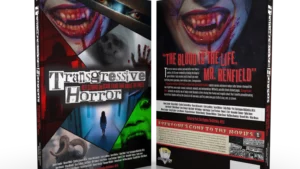 1-What’s a Ghost Show, and why did you name your press after it?
1-What’s a Ghost Show, and why did you name your press after it?What paying customers actually got was carnies in rubber masks carrying off planted female accomplices, cheap stage magic tricks, and decaying 16mm prints of decades-old Poverty Row films. It was a total con, but the willing marks got what they really came for: a wild burst of pure fun and imagination that filled their world with more wonder than they knew.
3-What inspired the first book in the series, Transgressive Horror?
I’d been thinking of doing a book like TH all by myself since back when I was a much younger, energetic fellow, but life and other paid work kept getting in the way. Then in the fall of 2020, my dear friend James Lowder (the legendary writer and editor) casually mentioned he had an unpublished essay on Witchfinder General (1968) in his files. That’s when the cartoon lightbulb went off, and I realized I could finally do TH by leveling up to publisher & editor, writing only as much as I cared to, and asking other creators (first-time writers and veteran scribes) to join in. And thus did TH arise from the slab, ready to run amok in the world.
4-Are there any films you wish had made the book that didn’t?
I’m a fan of pioneering director Stephanie Rothman, and always want to boost the signal on her work (like now!); the underrated The Velvet Vampire (1971) in particular. I offered TVV to every writer who asked for suggestions, and nearly wrote about it myself, to no avail.
Given the genre, we’re fairly obligated to do Transgressive Horror 2 at some point, and will hopefully get to TVV in the sequel.
5-What’s next?
On April 27, 2022, Ghost Show Press launches its Kickstarter for Vol. 2 in the Everyone’s Gone to the Movies series, Subversive Sci-Fi: Reflections on Futuristic Films That Broke the Rules. We’re very blessed to have nearly the whole team back from Vol. 1, as well as some fabulous new additions.
Not sure of the exact date, but at some point my farewell to tabletop gaming industry will be released: The History of Sentinel Comics, the true story of everyone’s favorite imaginary publisher. It’s co-written with the amazing Darren Watts, and published by the greater folks at Greater Than Games. Darren is supremely gifted, and with GTG I was never treated better as a freelance writer. It’s a funny, obsessively detailed, and affectionate ode to everyone who loves comic books, and the best possible way to bid adieu to my time in tabletop games.
Talking Cryptids At Josh’s Worst Nightmare
Recently I sat down with Josh Schlossberg, editor of The Jewish Book of Horror, to talk about one my favorite subjects: cryptids. If you’re feeling squatchy and have half an hour, take a listen. We talk Bigfoot, why I think the Loch Ness Monster is highly unlikely, and more critters, with a special shout-out to Mothman. Because, you know, it’s Mothman.
Time Is Ticking Down
A little over two weeks to go before the release of Ghost of a Marriage! There’s still time to pre-order here.
Five For Writing – Lauren Stone
This week’s Five For Writing is a day late, for which I apologize, but I promise you it’s worth the wait. Today’s guest is Lauren Stone, narrative lead on the Division franchise and doer of All The Things story-related for Ubisoft. Her credits are diverse enough to include both Rainbow Six: Siege and Eagle Flight. I had the privilege of working with Lauren on The Division 2 and she is smart, fast, funny, and sharp. But enough of me talking about her; here she is in her own words.
 1-What says good game writing to you?
1-What says good game writing to you?
Good game writing to me is narrative that supports, enhances and elevates the experience. Anything that helps support and build the world, the mechanics and the player experience is good game writing to me. Whether that is a piece of UI Text that gleans clarity or a cinematic
that makes you cry.
2-How do you keep a story like The Division’s going years after release?
By focusing on character. Though we may be almost 6 years past the original release of Division 1 we haven’t even spent a full year in the world in terms of the story’s timeline. We have really only made it to late-August in the currently released content and October in the new novel that is coming out in February 2022. The majority of our story is told in the past and through flashbacks in the form of audio collectibles and active missions. It’s been 6 years for us but only 10 months for our characters.
 As we explore new regions, we meet new people and all of those people have rich histories and backstories that made them who they are and how they react to the situation at this point. We get the privilege of learning more about established characters by meeting people we’ve never met before and getting their perspective on the state of the world and what our characters have represented to them based on how they have been treated by agents of the Division or individual interactions with our established characters. We will be learning more about many of our established characters in future content releases over the next year and I’m excited to see how the community responds to the new information they get about these people they think they already know. The funny thing about people is we are always much more complicated than expected and unless you directly ask someone why they do a thing and they answer honestly, you can never truly understand someone’s motivations or reasons for behaving the way they do. As long as people are complex and your characters are built like real people, you will never run out of potential stories you can tell about them.
As we explore new regions, we meet new people and all of those people have rich histories and backstories that made them who they are and how they react to the situation at this point. We get the privilege of learning more about established characters by meeting people we’ve never met before and getting their perspective on the state of the world and what our characters have represented to them based on how they have been treated by agents of the Division or individual interactions with our established characters. We will be learning more about many of our established characters in future content releases over the next year and I’m excited to see how the community responds to the new information they get about these people they think they already know. The funny thing about people is we are always much more complicated than expected and unless you directly ask someone why they do a thing and they answer honestly, you can never truly understand someone’s motivations or reasons for behaving the way they do. As long as people are complex and your characters are built like real people, you will never run out of potential stories you can tell about them.
3-You help coordinate novels based on Ubisoft IP. What makes a good transmedia novel in your
opinion?
One that respects the source material but explores different types of stories that work better for the medium. We get to be more internal in a novel. We get to focus on motivation and character in a way that you can’t really explore in the game without it feeling cheesy or like the writer is trying too hard to be clever. My favorite things about transmedia is that it allows you to engage in the world in ways that are suited to the medium. What works for film does not always work for a novel or an audiodrama, what is perfect in a comic doesn’t always translate to the game. If your world is rich you can make a piece of art in any medium. My weird dream that will never happen because I am a musical theater kid would be to make a Division Musical with Lin Manuel Miranda, my original dream before getting involved with transmedia was to have him get into a booth and just freestyle rap about the state of the world and be an NPC in a safehouse near Broadway. That Lin was just a person who survived and tried to keep making art. This is my weird fantasy that will never happen, but, eh, weirder fantasies have become reality and sometimes throwing things out into the universe can result in the world echoing back, “yes please, I want to have that.”
4-How do you instill narrative in a game like Rainbow Six: Siege, that doesn’t have the sort of
structure that generally allows for narrative development.
 The same way I approach all narrative design. I look at the constraints as opportunities. All we have is barks, which means all we have is character. We have ambient audio to build the map, we tell a fixed story in the map. We use the art to build the world. We use the textures and marketing to ground the characters. Multiplayer live games in general are not built to tell a single player narrative experience. That is not the goal. A lot of the stories in games that are traditionally elevated as being amazing are really screenplays with combat beats. The richest and most complex stories are in games that are much more complicated than that. But I think people still expect the game to fit in a screenplay format, especially for award shows. We need to retrain people on what qualifies as story. It’s not just the cinematics. Especially when you can hold A to skip. It’s the content you engage with regardless of how expensive or long you engage with it. The small moments are the things that people remember. The weird lines and characters or a stunning piece of art. A moment that is real and evocative and makes you feel something and helps you better understand the world is a great piece of story, even a piece of graffiti that lets you know the True Sons are here, get ready, can be a wonderful and necessary story that helps the player engage more fully with the world.
The same way I approach all narrative design. I look at the constraints as opportunities. All we have is barks, which means all we have is character. We have ambient audio to build the map, we tell a fixed story in the map. We use the art to build the world. We use the textures and marketing to ground the characters. Multiplayer live games in general are not built to tell a single player narrative experience. That is not the goal. A lot of the stories in games that are traditionally elevated as being amazing are really screenplays with combat beats. The richest and most complex stories are in games that are much more complicated than that. But I think people still expect the game to fit in a screenplay format, especially for award shows. We need to retrain people on what qualifies as story. It’s not just the cinematics. Especially when you can hold A to skip. It’s the content you engage with regardless of how expensive or long you engage with it. The small moments are the things that people remember. The weird lines and characters or a stunning piece of art. A moment that is real and evocative and makes you feel something and helps you better understand the world is a great piece of story, even a piece of graffiti that lets you know the True Sons are here, get ready, can be a wonderful and necessary story that helps the player engage more fully with the world.
5-What are you looking forward to seeing in game writing as we go forward?
I’m looking forward to people respecting barks. Respecting the Menus and HUD. Respecting each other’s work. I’m looking forward to the future where we realize everything matters and everything is worth focus, attention, energy and consideration. Every person in your world from the studio to the characters is deserving of having their humanity and contributions seen, celebrated and respected. I’m looking forward to people realizing that game narrative is a viable option to tell story, to build a career, to create stability and art. I’m looking forward to more people learning how to use the constraints as opportunities.
Thanks so much to Lauren for her time and thoughtful answers, and check out her work on the ongoing saga of The Division.
Next week things are going to get a little crazy – I’m interviewing…an editor.
Five For Writing – Jesse Scoble
Jesse Scoble has the singular misfortune of being a good friend of mine. A Chief Narrative Designer at TenCent, he’s done stints at Ubisoft (HyperScape, Assassins’ Creed: Odyssey, Far Cry 5 and others) Wizard101, Webkinz and more. He has contributed to Beyond the Wall; The Bones; co-edited two short-story anthologies in the Silver Age Sentinels TTRPG setting; and co-edited James Hsu’s Humans of Magic. A resident of Montreal, he wants you all to know he makes a mean mojito.
And so without any further delay, I give you the multitalented Jesse Scoble:
 1-What’s it like putting together a narrative for a game like HyperScape that is by definition non-linear?
1-What’s it like putting together a narrative for a game like HyperScape that is by definition non-linear?
I see you want to start with a softball question. So. Coming to HyperScape (Ubisoft’s near-future, dystopian battle royale), we believed what would differentiate us from an already crowded field would be to have a strong story. Some games have virtually no story, or maybe they have a framing story (say a modern warzone) but have no real sense of character, while some have incredibly rich characters (Apex Legends, Overwatch) but relatively thin plot. We wanted to have all of that.
We needed to create a new world – and elected to set it about 30 years in the future, in 2054, which wasn’t necessarily realistic in terms of the virtual world – the eponymous HyperScape – and then come up with an overarching storyline that would drive the world forward. Much of that centered on the company that created the HyperScape, a global megacorporation called Primsa Dimensions, and the creators of the company, genius inventor Mathieu Eiffel and his savvy business partner, Dr. Ivy Tan. The machinations of Prisma Dimensions would be the engine that drove the story.
In terms of the “framing story” – and what I mean by that is essentially a narrative explanation for the battle royale concept – we chose to embrace the battle royale game concept directly, and define it as an extreme sport in the virtual world of the HyperScape. In the dystopia of 2054, it was the most popular way to gain fame and fortune. The characters would fight and kill to try to get ahead, but as it was just a virtual game, then there was no problem seeing someone “die” or for various characters to fight each other even though they were friends or on the same side outside the game.
Finally – and perhaps most importantly – we wanted the characters to have depth and flavor, and to have strong ties to the world of 2054. We wanted to have a large and ever-expanding roster that would let us create characters from all sorts of different backgrounds and walks-of-life, and we’d show how these characters evolved from season-to-season as the plot of the story moved forward.
Another core challenge was that, unlike a AAA console action/adventure game (say Assassin’s Creed or Far Cry or Spider-Man or Witcher or whatever), players would only get tiny snippets of the story. There wouldn’t be traditional quests and we’d have very few cinematics. We had to be smart in figuring out how to relay the story in a way that would be comprehensible to those who only lightly skimmed the surface but would have strong connections for those who wanted to dig deeper into the lore.
Our team also had a robust transmedia approach (can I still say “transmedia” in 2021? Whatever.): we had a deal with Dark Horse to create a HyperScape digital comic; we also worked with a great 3rd party company to create a couple of short animations, our “HyperScape Stories” that spotlighted characters like Ace and Basilisk; and of course we had our internal team building season trailers, in-game cinematics (such as the End of Season 1 event), and so forth.
Finally, the narrative and art team worked closely to create a dozen collectible “memory shards” that would be revealed over the course of the season. Each one had a piece of micro-fiction and an awesome piece of custom art, like a comic splash page or wallpaper screen. These really told the crux of the season’s story, allowing us to get into characters’ heads, feel the flavor of the world, and also conveyed the big moving pieces of the plot.
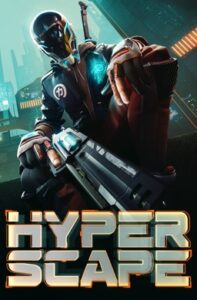 This meant a LOT of planning: how much info could we write into a character’s bio in the store? What would be consistent and change between different skins? What bio info would change from season-to-season? When was a character/skin going to be released DURING a season? What order would the memory shards be released? Could we do environmental storytelling on the game map that would link to the fiction? Where would the trailers or short movies come out? How do we tell an engaging story in the comic that links to everything else, but also feels self-contained?
This meant a LOT of planning: how much info could we write into a character’s bio in the store? What would be consistent and change between different skins? What bio info would change from season-to-season? When was a character/skin going to be released DURING a season? What order would the memory shards be released? Could we do environmental storytelling on the game map that would link to the fiction? Where would the trailers or short movies come out? How do we tell an engaging story in the comic that links to everything else, but also feels self-contained?
And – as you well know – in video games everything is always at a risk of moving. Things get delayed. A feature won’t work. Marketing throws you a curveball.
In the end, we made mistakes. Lots of mistakes. But we also succeeded to hit many of our goals, and learned a tremendous amount in the doing.
2-You have an extensive track record in tabletop RPGs. Ever thought about going back and doing more TTRPG work?
Yes, but no. It was extensive at one time, but I’ve been playing in the video game playground for three-quarters of my career now, so it feels like I haven’t done much in that space for ages. Hell, I worked on the first Game of Thrones RPG that was so long ago it was BEFORE season 1 of the HBO show.
TTRPGs are fun, but a helluva lot of work, in terms of research and organization and presentation. It’s hard enough putting together a halfway decent game for my local group, let alone something that’s publishable quality.
I’ve gone back to the well a few times in the past semi-recent years. I was a consultant on the short-lived Marvel Heroic RPG (from Margaret Weis Productions), with some luminaries in the industry, and that was a treat. I was invited to contribute to two different projects – one was a setting for Robin Laws’ DramaSystem called Narcocorrido; and then I revisited some of that material “through a neon lens” for Mark Richardson’s neocyberpunk RPG, Headspace (Carteles Unidos, in the Dystopian Dreams supplement), both of which were obviously inspired by my time living in Austin, TX. I’ve also contributed a few essays here and there, and co-edited a series of interviews with top-tier Magic players for a good friend.
These days, due to limited time and focus, I need to be really intrigued by a project to carve out the time for it. It either has to be a project where I have a lot of creative freedom and some degree of ownership, or something that is just so cool I can’t say no. That said, I have yet to actually do anything official for Dungeons & Dragons or Warhammer 40K, two IPs that I’d happily make the time to delve into (just throwing that out there in case the universe is listening).
Oh, and I have a brilliant idea for how to make an RPG out of HADES, the superb rogue-like from Supergiant games, in case anyone knows anyone over there.
3-What’s the most challenging aspect of game writing for you?
All of it? I realize that’s a useless answer.
I think it’s trying to impart the “perfect picture” in my head to paper, and then have the rest of the team understand it. It’s so elegant and clear in my mind’s eye (well, hardly ever that, but it’s certainly better than whatever I end up scrawling on the page), and there’s so much of a gap that is created between the act of putting pen to paper, and then again between the person reading it and implementing the ideas. And this gap widens when dealing with challenges of language and distance.
At their worst, when gameplay and art and recording limitations are all dragging you down it can feel like the death of a thousand cuts. But the corollary is that when it all somehow hangs together – when the gameplay supports the narrative (and vice versa) and the art is glorious and the voice acting adds that je ne sais quoi nuance, it can create a magical experience for the player. And I live for that.
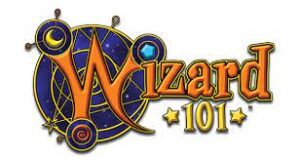 4-What’s your favorite part of the job when it comes to game writing?
4-What’s your favorite part of the job when it comes to game writing?
Seeing these fifty(thousand) different moving parts that like-as-not won’t fit properly together or work well together or might not even work at all somehow come together miraculously and gel. It’s seeing those scribbles on the screen become real and extant, in a way that makes people engage and act. It’s creating both the big moments and the small moments, and when it works it makes people feel something. That’s the heart of it.
In particular, hearing/watching actors take the words on paper and breathe life into them is a kind of magic.
Perhaps most importantly, it’s getting to work with some incredibly smart, bright, funny, kind, talented and clever people.
5-You’re working on your first novel. How has that experience been different from game writing?
What do they say? “Writing is the easiest thing… you just stare at the blank page until your forehead bleeds.”
It’s… hard. I look back at random Facebook memories and realize how bloody long I’ve been on this road, and there’s no real end in sight (I keep thinking I see light ahead, but I’m pretty sure it’s just an oncoming train.)
First, because I can’t do anything simply, I decided for my first real attempt at a novel to co-write it with a close friend. And that’s been great. Also hard as sin. But having two heads to process ideas, encourage and cajole when the other side just doesn’t want to pick up a pen, bringing far more ideas and experiences than a single person – it’s like working with a teensy-tiny team. (Well, not “like.”)
(And we have a third friend who has been the alpha reader for all of our ideas throughout this long and twisty process. Having a ‘built-in’ story-editor, of sorts, has been a godsend.)
But it’s hard. It was a big idea (for me, at least), and structurally complicated, and cutting edge – several and more years ago when we first thought about it. And the future doesn’t hold back. The realities of online culture, and such like, keep moving and evolving in ways I wouldn’t have considered. It’s not dated – yet – but if I don’t hurry up and finish it, it soon will be.
It’s also very lonely, despite having two friends involved so closely. And it’s hard to know what the right paths are for the characters, at times, to get to where I want to get.
It’s taught me a lot about organizing my work and ideas, outlining and structuring a story, and developing character voices. Not all of which I’ve mastered yet, despite professionally writing for too many years now. And, as mentioned, a whole lot of time has passed since we first conceived of this story. I like the characters too much to want to abandon them, but it’s hard to say how and when I’ll finish this story satisfactorily, even if just for a limited audience.
A huge thank you to Jesse for his thoughtful and engaging answers. Tune in next week when I’ll have another writer in the hot seat!
Happy New Year and Thank Yous
Wishing everyone out there a very happy new year! I’d like to take this moment to say thank you to some folks who have been instrumental in my writing this past year. So big thanks to:
- Robin Laws, who green lit the first Reb Palache story many years ago for The New Hero
- Josh Schlossberg, for publishing “On Seas of Blood and Salt” in The Jewish Book of Horror
- Alex Hofelich and the rest of the wonderful folks at PseudoPod for publishing me – I am honored to be among their roster of authors
- David Niall Wilson and the fine folks at Crossroad Press, for picking up Ghost of a Marriage and getting set to bring it to the world in February. (Hint – now would be a great time to pre-order!)
- Jeff Strand, Mikko Rautalahti, Jesse Scoble, Rachel Zane and Laura Hickman for reading the manuscript and providing invaluable help on it, some of which I was smart enough to take.
- Bridgett Nelson for reading and editing some of my short fiction and still speaking to me afterwards
- John McIlveen, for reasons that will have to remain mysterious for now
- James A. Moore, Mur Lafferty, Maurice Broaddus, Rhianna Pratchett, Anna Megill, Annie Reid and so many more for being shining examples of the craft
- Toiya K. Finley, Richard Rouse III and Alexander Bevier for collaborating in putting on an online gathering of game writers that was good for the soul
- Susan O’Connor and Tom Abernathy, my co-conspirators in curating the Game Narrative Summit at GDC
- Walter Rotenberry and company at East Coast Game Conference for allowing me to once again curate their narrative content
- Pauline Martyn, James Charles Leary, Tom Knights, and Justin Achilli for secret things
- All the writers who agreed to let me interrogate them in Five For Writing
- And all of you for reading this
So a giant thank you to everyone for all that you did in 2021. Here’s to 2022 and happier days!
Five For Writing – Alex Bledsoe
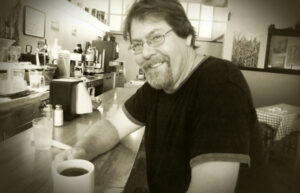 Alex Bledsoe’s Tufa novels are some of the finest modern fantasy out there. If you haven’t read them, they’re a treat and you owe it to yourself to pick them up. He also was part of the collective that wrote for Transgressive Horror: Reflections on Scare Films that Broke the Rules, which is where our paths crossed. He was kind enough to sit down for five questions about the Tufa novels, vampires in Memphis, and why all horror movies are transgressive. Without further ado, I give you Five For Writing with Alex Bledsoe.
Alex Bledsoe’s Tufa novels are some of the finest modern fantasy out there. If you haven’t read them, they’re a treat and you owe it to yourself to pick them up. He also was part of the collective that wrote for Transgressive Horror: Reflections on Scare Films that Broke the Rules, which is where our paths crossed. He was kind enough to sit down for five questions about the Tufa novels, vampires in Memphis, and why all horror movies are transgressive. Without further ado, I give you Five For Writing with Alex Bledsoe.
1-What’s the appeal of transgressive horror films for you?
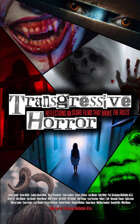 All good horror films should be transgressive in some sense; it’s in their nature. The point of horror is to expose the viewer to images and ideas they would never encounter elsewhere, and to show the embodiment of those images and ideas as realistically as possible. The German cinemagoers lucky enough to see Nosferatu on its first release would have considered the vampire as a transgressive figure, a visual representation of something that broke so many social rules.
All good horror films should be transgressive in some sense; it’s in their nature. The point of horror is to expose the viewer to images and ideas they would never encounter elsewhere, and to show the embodiment of those images and ideas as realistically as possible. The German cinemagoers lucky enough to see Nosferatu on its first release would have considered the vampire as a transgressive figure, a visual representation of something that broke so many social rules.
Really, a non-transgressive horror film can’t be very horrifying, like the endless PG-13 teen “horror” films released since the turn of the century. I’ve always thought all horror films should be rated R, because even if it’s *not* overtly violent, that threat should hang over everything. A PG-13 rating is a comfort blanket, and even if some of them can be quite good, they’re never truly horrifying.
2-What impact does your home base in the Smokies have on your writing?
Technically I’m from the other end of the state, close to Memphis, but my dad’s family is from the Smokies, and I’ve visited there many times. I’ve used the South as the setting for both of my past horror novels, as well as my upcoming one; although I’ve lived other places (I’ve been in Wisconsin for the past 18 years), the south is the one I most deeply understand. I think that’s why I keep returning to it as a setting; I don’t feel qualified to write about anywhere else, unless it’s a total fantasy setting.
3-You’ve got a series of vampire novels set in Memphis. What inspired you to turn vampires loose there?
It’s a city I know, or rather used to know, pretty well; my novels are set in the mid-70s. Plus it’s not over-used in horror fiction like, say, New Orleans. Memphis has a unique history, and since the novels deal with racism as well as vampires, it seemed like an ideal place to set it. I chose the year 1975 because it was before the publication of Interview with the Vampire, and thus was still the era when vampires were scary.
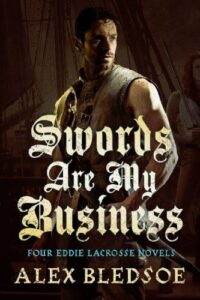 4-Your Eddie LaCrosse series is fantasy noir. Why mix those two genres?
4-Your Eddie LaCrosse series is fantasy noir. Why mix those two genres?
I wanted a way into a fantasy story that allowed a greater identification with the characters than I was seeing in the fantasy I read: too many unpronounceable names, too much emphasis on world building, not enough emphasis on character. I thought that the works of writers like Chandler, Parker, and Vachss did a great job of also taking you into worlds (a.k.a., crime) you might never visit, but they did it with an immediacy I wanted to claim. Plus that tone made it more fun to write.
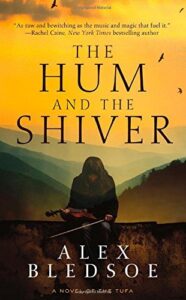 5-The Tufa novels feel deeply personal. Where did they come from, and will we see more of them?
5-The Tufa novels feel deeply personal. Where did they come from, and will we see more of them?
They grew out of stories I heard from my dad, about a strange group of people who lived in the Appalachian Mountains. The part that intrigued me was the idea that these people were already here when the first European settlers arrived. That was the starting point, but of course I made up my own group so I could give them a magical backstory. I felt six books was enough to say what I wanted, and anything past that I’d be restating things. But who knows? If I get a new idea, and there’s a publisher interested in it, it could happen.